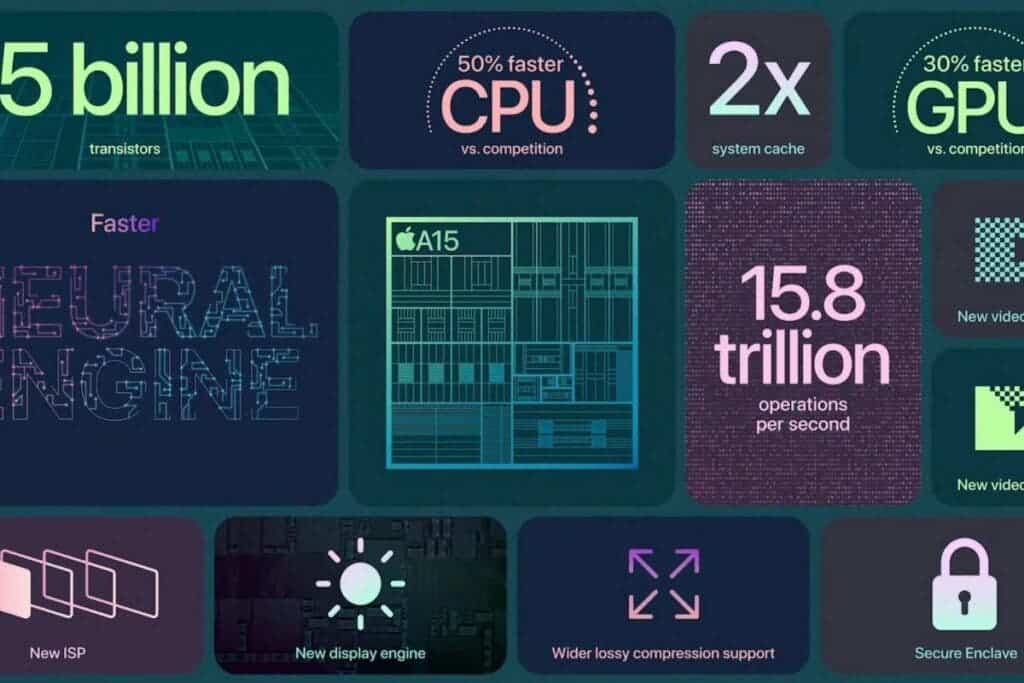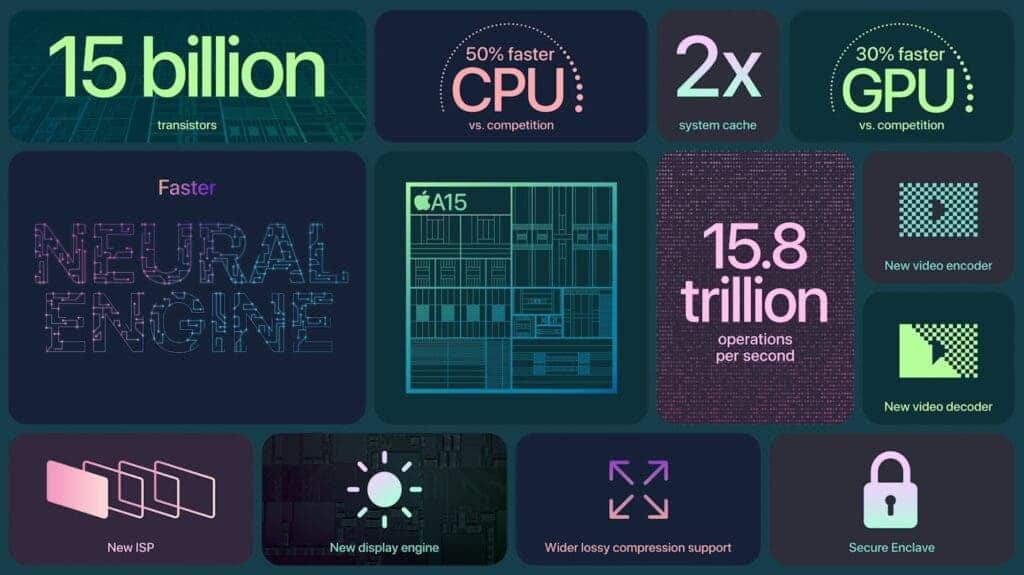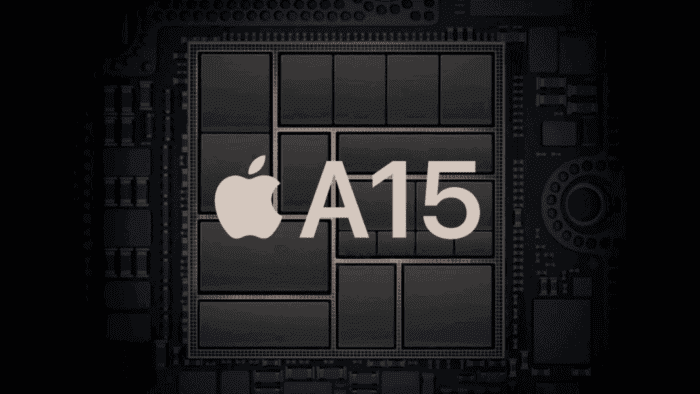Apple launched the iPhone 13 series with its latest A15 Bionic chip at the September conference. According to Apple, this chip is 50% faster than its competitors. AnandTech conducted a number of independent tests on the chip performance, efficiency, and graphics core. The test results show that the A15 Bionic is not 50% faster than the competition as Apple claims, but 62% faster.

The report shows that A15 has two new CPU micro-architectures, including two performance cores and four efficiency cores. They may be manufactured using processes above 5 nanometers. TSMC calls them N5P, which is based on its 5-nanometer process. However, this is a performance-enhanced version that allows higher frequencies. In addition, AnandTech also mentioned that the A15 Bionic system cache has been increased to 32MB. This is double the system cache of the previous A14 Bionic processor.
Furthermore, the report also claims that doubling “dwarfs competitors” and is a key factor in the chip’s power efficiency. It can keep memory access on the same silicon chip instead of shifting to slower, more power-hungry DRAM.
However, the overall heat dissipation design of the Apple iPhone is considered “absolutely the worst” because it does not distribute heat well to the entire phone body. Despite this shortcoming, the iPhone 13 is still much faster than competing phones and gives a better gaming experience. In short, AnandTech’s test report points out that the improvement of the A15 Bionic is “substantial”. Furthermore, the improvement of efficiency is the “key” to greatly extend the battery life of the iPhone 13 series.
Apple A15 Bionic succinct details
The A15 Bionic processor integrates up to 15 billion transistors, an increase of 3.5 billion relative to the previous generation with 11.5 billion. This means that the Bionic A15 is a 30% increase but the manufacturing process remains TSMC’s 5nm process.

The CPU part is still 6 cores which include 2 high-performance large cores, and 4 high-efficiency small cores. According to the company, this chip is 50% ahead of competing products. The GPU has been upgraded from 4 cores to 6 cores, and Apple also says it is 30% ahead of competing products. However, it is important to note that only the A15 Bionic on the iPad mini has 6 acres. The iPhone 13 Pro series has 5 cores while the iPhone 13/13 mini has only 4 cores.
Furthermore, the system cache capacity is now double, and there is a new ISP image signal processor, a new display engine, a new video encoder, a new video decoder, a new security module, and a new lossless compression algorithm. Naturally, the neural engine must be upgraded. The computing power per second has reached 15.8 trillion times, which is 34% faster than the previous generation. It can run powerful CoreML and AR modeling smoothly.





